Succulents have become increasingly popular in the world of gardening, and it’s easy to see why. These versatile plants bring beauty, ease of care, and a touch of nature into any space, whether indoors or out. As an expert gardening blogger, I have had the pleasure of growing and nurturing various succulent varieties, and I am excited to share my knowledge and passion for these remarkable plants with you.
Benefits of Growing Succulents
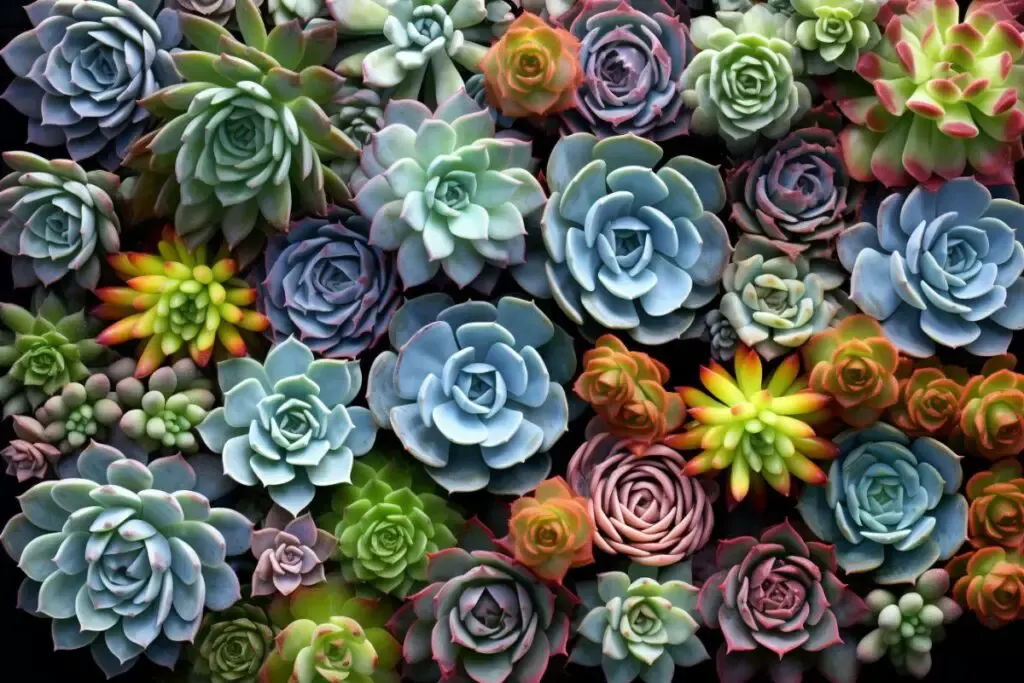
Succulents offer a myriad of benefits, making them a fantastic choice for both novice gardeners and seasoned horticulturists. Here are three key advantages of growing succulents:
1. Low Maintenance
One of the most appealing aspects of succulents is their low-maintenance nature. These resilient plants require minimal watering, can thrive in various light conditions, and generally need very little attention. This makes them an excellent choice for busy individuals or those who may not have a green thumb.
2. Versatility
Succulents come in an astounding array of shapes, sizes, and colors, providing endless possibilities for creativity in gardening and home décor. They can be planted in pots, terrariums, or directly in the ground, and they complement a wide range of design styles. Their adaptability also means they can thrive in a variety of climates and settings.
3. Air Purification
Like many other plants, succulents contribute to purifying the air in your home. They absorb toxins and release oxygen, helping to create a healthier living environment. This, combined with their aesthetic appeal, makes them a fantastic choice for indoor gardening.
My Favorite Succulent Varieties
Over the years, I’ve had the opportunity to grow numerous succulent varieties, and while it’s hard to pick favorites, there are a few that stand out due to their unique characteristics and ease of care. Here are three of my top picks:
1. Echeveria
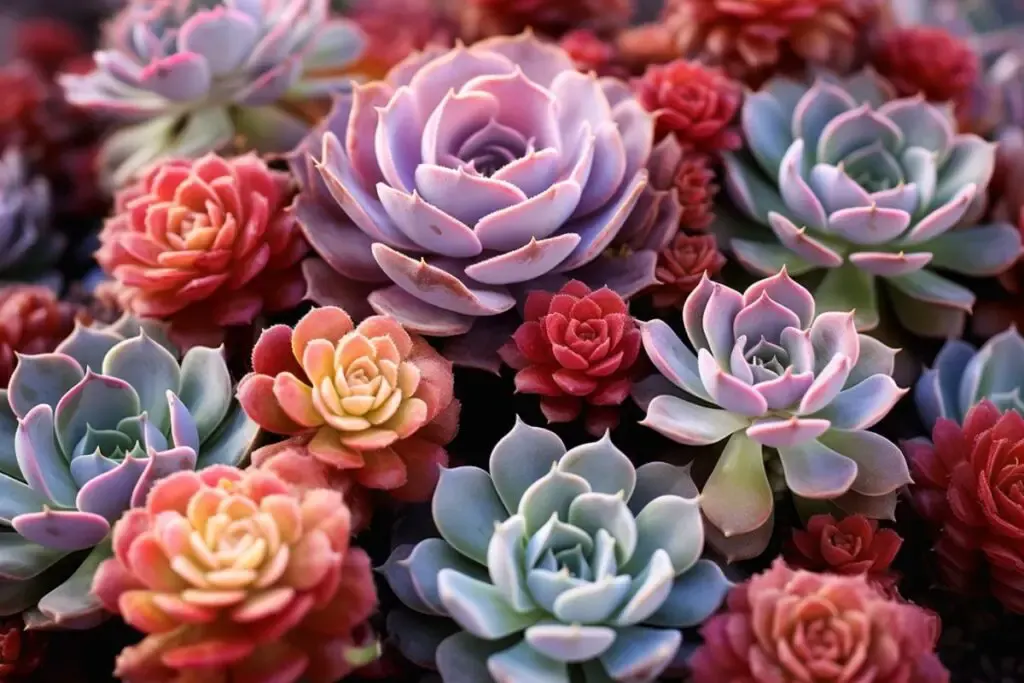
Echeveria succulents are well-known for their rosette-shaped leaves and vibrant colors. They are relatively easy to care for, requiring minimal water and plenty of sunlight. The ‘Perle von Nürnberg’ is a particularly stunning variety, with its purple-pink leaves and powdery finish. It’s a true showstopper in any succulent collection.
2. Aeonium ‘Zwartkop’
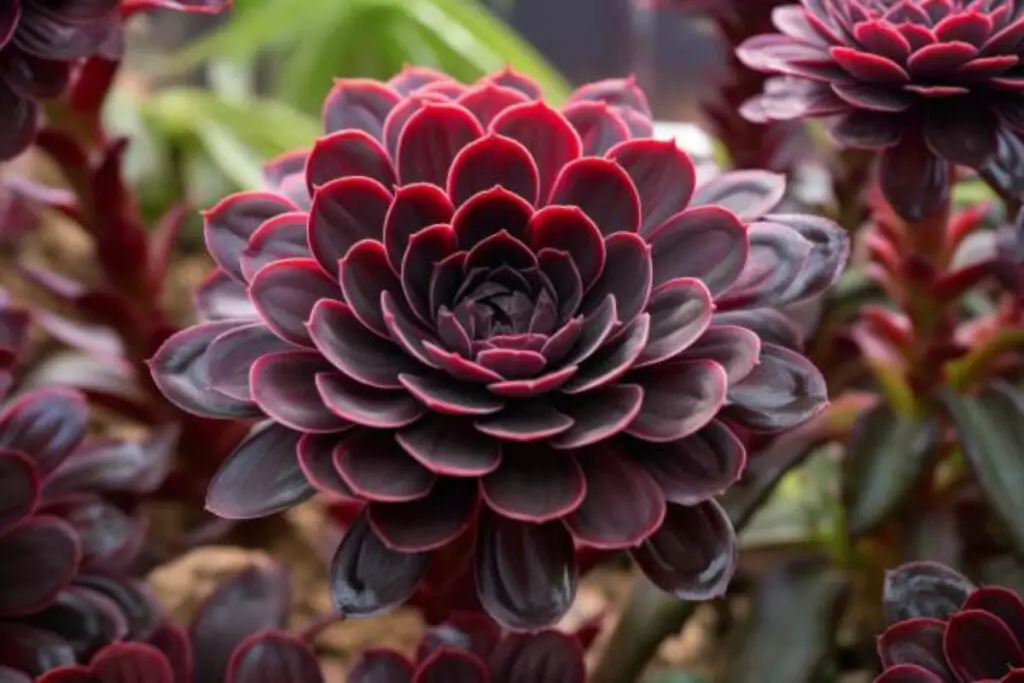
Also known as the Black Rose succulent, this variety features dark purple, almost black leaves that form a dramatic rosette. It adds a unique touch to any succulent garden and thrives in bright, direct light. I find the contrast it provides when paired with lighter-colored succulents to be particularly striking.
3. Sempervivum
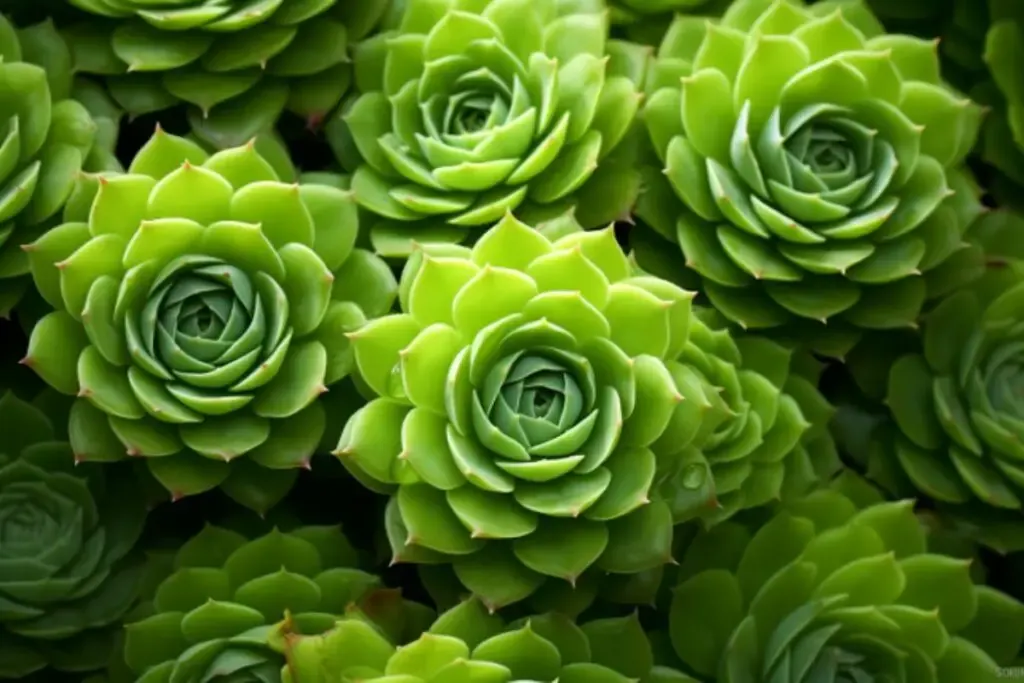
Commonly known as Hens and Chicks, Sempervivum succulents are hardy, low-growing plants that produce offsets, or “chicks,” which can be easily propagated. They are incredibly resilient and capable of surviving in harsh climates and poor soil. The variety of colors and forms available makes them a versatile choice for any garden.
Succulent Care
Succulents are popular plants known for their thick, fleshy leaves and stems, which allow them to store water. They are generally easy to care for, but there are some specific guidelines you should follow to keep them thriving.
Planting
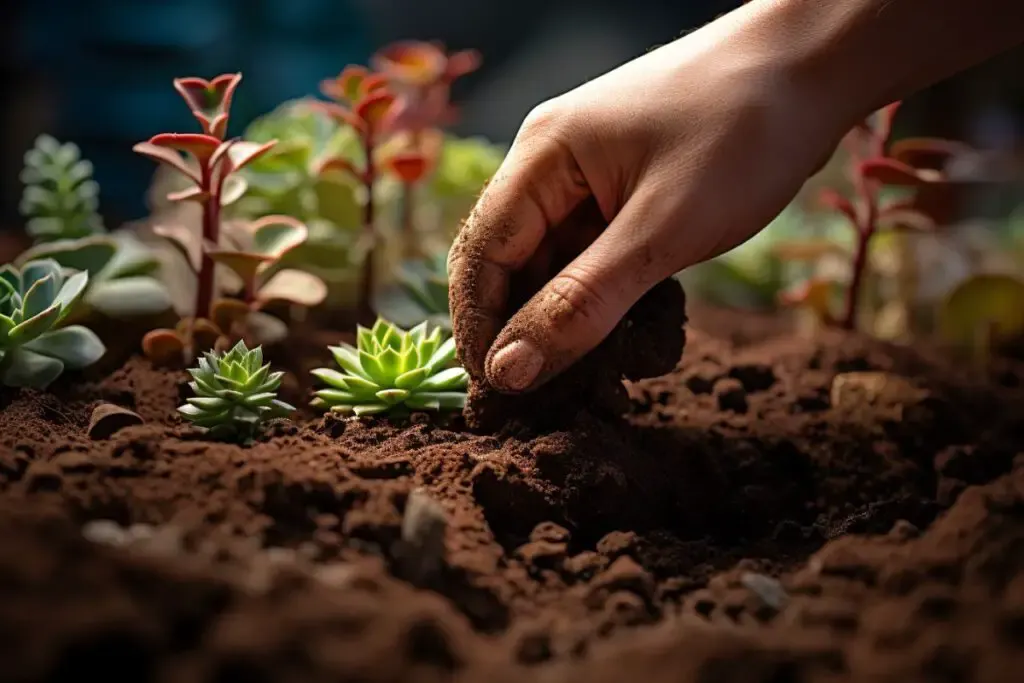
When planting succulents, choose a pot with drainage holes to prevent water from sitting at the bottom and causing root rot. Use a well-draining soil mix designed for cacti and succulents. Plant the succulent in the pot so that the soil level is about the same as it was in the nursery pot, ensuring that the leaves are above the soil surface.
Light
Succulents need plenty of light to thrive. Place them in a location where they will receive at least 6 hours of direct sunlight each day. If you’re growing succulents indoors, a south-facing window is ideal. If the plant isn’t getting enough light, it may start to stretch toward the light source, resulting in a leggy appearance.
Soil
Succulents require well-draining soil to prevent root rot. Use a commercial cactus and succulent mix, or make your own by mixing potting soil with perlite or sand to increase drainage. Avoid using soil that retains too much moisture.
Water
Overwatering is a common issue with succulents. Allow the soil to dry out completely between waterings, and then water thoroughly. During the growing season (spring and summer), you may need to water once a week or more frequently, depending on the humidity and temperature. In the dormant season (fall and winter), reduce watering to once a month or less.
Temperature and Humidity
Succulents prefer a dry climate and do well in temperatures between 60 and 80°F (15-27°C). They can tolerate temperatures as low as 40°F (4°C) but should be protected from frost. Humidity should be kept low; if the air in your home is very humid, consider using a dehumidifier.
Fertilizer
Succulents have minimal fertilizing needs. During the growing season, you can apply a balanced, water-soluble fertilizer once a month. Be sure to dilute the fertilizer to half the recommended strength to avoid burning the plant. Do not fertilize during the dormant season.
Pruning
Pruning is an important aspect of succulent care. It helps to keep the plants healthy, encourages growth, and maintains an attractive appearance. Use clean, sharp scissors or pruning shears to remove dead or damaged leaves and stems.
You can also trim back any elongated or stretched-out stems to encourage bushier growth. Be sure to make your cuts close to the main stem or the next leaf node.
Propagating
Succulents are relatively easy to propagate, and it can be a fun and rewarding process. There are three main methods of propagation: leaf cuttings, stem cuttings, and offsets.
- Leaf Cuttings: Gently twist a healthy leaf from the main plant, ensuring you get the entire base. Let the leaf dry for a few days until the cut end forms a callus. Then, place it on top of well-draining soil and mist lightly. In a few weeks, roots and a new plant will begin to form.
- Stem Cuttings: Cut a piece of stem from the main plant using clean, sharp scissors or pruning shears. Allow the cut end to dry and callous over for a few days. Then, plant the cutting in well-draining soil.
- Offsets: Some succulents produce small offsets or “pups” at the base of the main plant. Gently remove the offset, ensuring it has some roots attached. Allow it to dry for a few days before planting in well-draining soil.
How to Grow Succulents From Seed
Growing succulents from seed can be a bit more challenging than propagation, but it is still a feasible option. Start by purchasing seeds from a reputable source. Fill a shallow tray or pot with a cactus and succulent soil mix, and scatter the seeds on top.
Cover the seeds with a thin layer of soil, and mist the surface lightly. Cover the tray or pot with a plastic lid or wrap to create a humid environment. Place the tray in a warm, bright location, but out of direct sunlight. Keep the soil consistently moist, but not soggy. Germination can take several weeks to a few months, depending on the species.
Growing in Pots
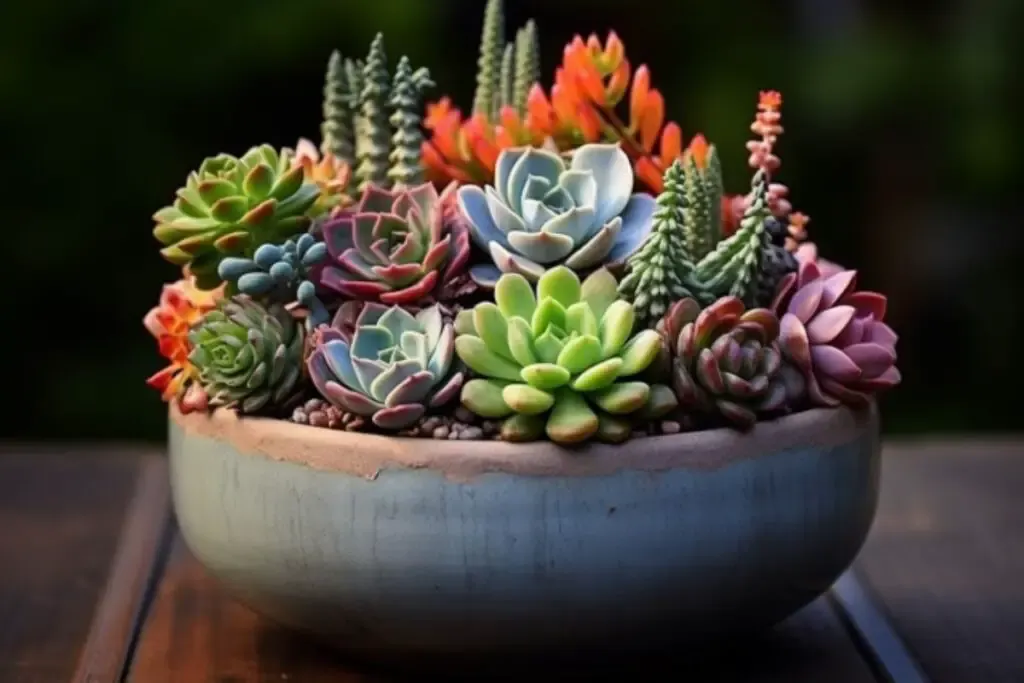
Succulents are well-suited to growing in pots, which allows for better control over the growing conditions.
- Choose the Right Pot: Ensure the pot has drainage holes to prevent water from sitting at the bottom and causing root rot. Terra cotta pots are a good option as they allow the soil to dry out more quickly.
- Use Well-Draining Soil: Fill the pot with a commercial cactus and succulent mix or make your own by mixing potting soil with perlite or sand.
- Proper Watering: Allow the soil to dry out completely between waterings, and then water thoroughly. Reduce watering during the dormant season.
- Provide Adequate Light: Place the pot in a location where the succulent will receive at least 6 hours of direct sunlight each day.
- Fertilize Sparingly: Apply a balanced, water-soluble fertilizer once a month during the growing season, diluted to half the recommended strength.
Overwintering
Succulents, particularly those that are not cold-hardy, require special care during the winter months to ensure their survival. Here’s how you can protect your succulents during winter:
Indoors:
- Bring Them Inside: If you live in a region with harsh winters, bring your outdoor potted succulents inside before the first frost.
- Provide Adequate Light: Place them near a south-facing window to ensure they receive enough sunlight. If natural light is scarce, consider using grow lights.
- Reduce Watering: Water less frequently, allowing the soil to dry out completely between waterings. Some succulents go dormant in the winter and require very little if any, water.
- Maintain a Cool Temperature: Keep the temperature between 50-55°F (10-13°C) if possible.
Outdoors:
- Mulching: Cover the succulents with a thick layer of mulch to protect the roots from freezing temperatures.
- Cloche or Frost Cloth: Use a cloche or frost cloth to cover succulents in the ground, creating a barrier against frost and freezing winds.
- Choose Cold-Hardy Varieties: If you plant succulents outdoors, choose varieties that are tolerant of your local climate.
Transplanting
Transplanting can give succulents more space to grow and refresh the soil. Here’s how to do it:
- Choose the Right Time: The best time to transplant succulents is in the spring or early summer when they are coming out of dormancy and entering a period of active growth.
- Prepare the New Pot: Ensure it has drainage holes and fill it with a well-draining soil mix.
- Remove the Succulent: Water the succulent a day before to make the soil more pliable. Gently remove the succulent from its current pot, shaking off excess soil and checking the roots for any signs of rot.
- Place in the New Pot: Set the succulent in the new pot, adjusting the soil level as necessary. Fill in around the roots with soil, pressing down gently.
- Wait to Water: Wait a few days to water, allowing any disturbed roots to heal.
Common Pests & Diseases
Succulents are relatively low-maintenance but can still fall victim to pests and diseases.
Pest:
- Aphids: Small, soft-bodied insects that can cause deformed growth. Remove with a strong stream of water or use insecticidal soap.
- Mealybugs: Small, cottony pests that suck plant juices. Remove with a cotton swab dipped in alcohol.
- Spider Mites: Tiny spiders that cause yellowing leaves and fine webbing. Increase humidity and use insecticidal soap or neem oil.
Diseases:
- Root Rot: Caused by overwatering and poor drainage. Prevent this by using well-draining soil and not overwatering. Affected plants may need to be discarded.
- Powdery Mildew: A white, powdery fungus on the leaves. Improve air circulation and reduce humidity. Fungicides can also be used.
- Botrytis Blight: A gray, fuzzy mold that occurs in humid conditions. Remove affected parts and improve air circulation.
Regular inspection and proper care can help prevent and mitigate these issues, ensuring your succulents remain healthy and vibrant.

